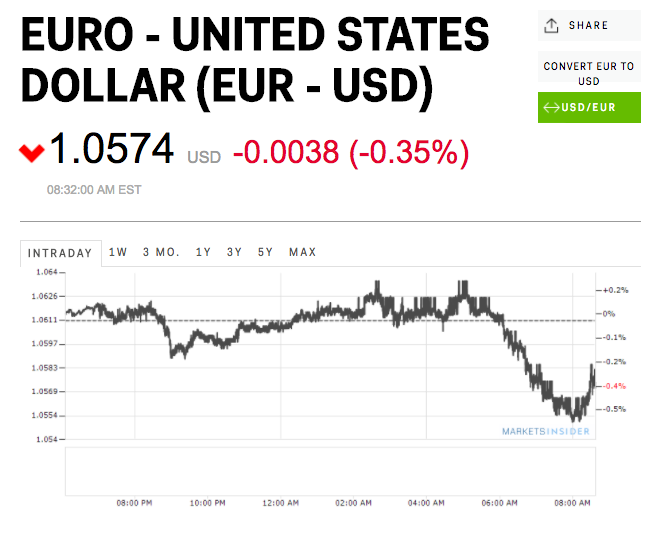The eurois tumbling on Friday.
The currency is down by 0.4% at 1.0575 against the dollar as of 8:36 a.m. ET.
On Thursday, the euro plunged by over 1.3% against the greenback, the largest drop since the UK referendum, after the European Central Bank announced a six-month extension to its quantitative easing programme.
“…we expect the ECB to continue to monetize its economy acting in support of financial conditions instead of focusing on the tighter policy needs of core EMU countries,” wrote a Morgan Stanley team led by Hans W. Redeker in a note.
Thursday’s “decision to extend QE while reducing the intervention amounts illustrates the ECB’s desire to provide support to peripheral bond markets,” they added.
The euro has has a tough few weeks, weakening against the greenback since early November as the election of Donald Trump ignited a broad-based US dollar rally.
And more recently, the currency slumped more than 1% as Italy's prime minister Matteo Renzi announced his resignation in Rome shortly after midnight local time on Monday, after losing the critical referendum on which he staked his political career.
Notably, back in late November, a Goldman Sachs team led by Francesco Garzarelli outlined its six "top trade recommendations for 2017" in a note to clients, with the first focusing on the rise of populism and its relationship to the euro. Amid the "transatlantic economic divergences and political risks," the team's first top trade is long US dollar equally weighted against the euro and sterling.
"In Europe, ongoing uncertainty over the Brexit process will likely weigh on the Pound, while the slew of elections, including the Italian political fallout after the constitutional referendum on 4 December and general elections in France, Germany and the Netherlands, will weigh on the EUR," they wrote.

